Introduction to Banana Cultivation
The banana (Musa spp.) is one of the most important fruit crops in tropical and subtropical regions, not only for its nutritional value but also due to its high demand in international markets. Proper management of banana cultivation is essential for achieving high yields and quality fruits. This article provides a comprehensive guide to best practices for banana cultivation, covering everything from site selection to harvesting and post-harvest management.

Site Selection and Soil Preparation
Ideal Climatic Conditions
Bananas thrive in warm, humid climates, with optimal temperatures between 25°C and 30°C. They require high relative humidity, ideally above 75%, and annual rainfall of 2,000 to 2,500 mm, well distributed throughout the year. Regions free of frost and with gentle winds are best suited for banana cultivation.
Soil Selection
Bananas require deep, well-drained soils rich in organic matter. Sandy loam or clay loam soils with a pH between 5.5 and 7.0 are ideal for this crop. It is crucial to avoid soils with drainage problems, as waterlogging can cause root diseases.
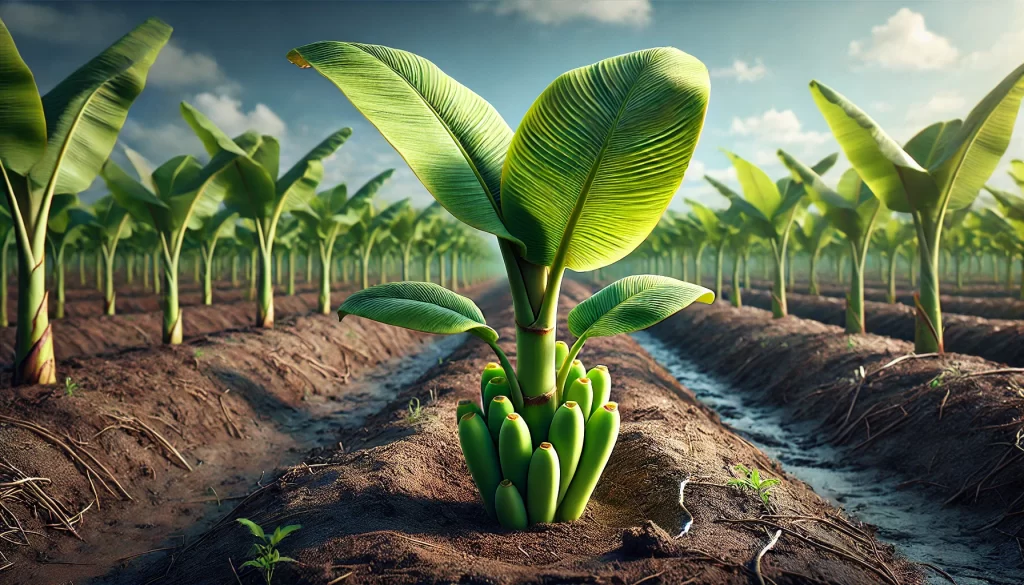
Soil Preparation
- Deep Plowing: Perform deep plowing to improve soil structure and facilitate root system development.
- Incorporation of Organic Matter: Add compost or well-decomposed manure to improve soil fertility and water retention capacity.
- Drainage: Implement an efficient drainage system to avoid waterlogging, especially during periods of heavy rainfall.
Banana Planting
Variety Selection
The choice of variety depends on the market and local climatic conditions. Some of the most common varieties are:
- Cavendish: The most widely grown and exported variety worldwide, known for its sweet taste and uniform size.
- Gros Michel: A traditional variety, valued for its flavor, though less resistant to diseases like Black Sigatoka.
- Plantain: A larger variety of banana, primarily used for cooking.
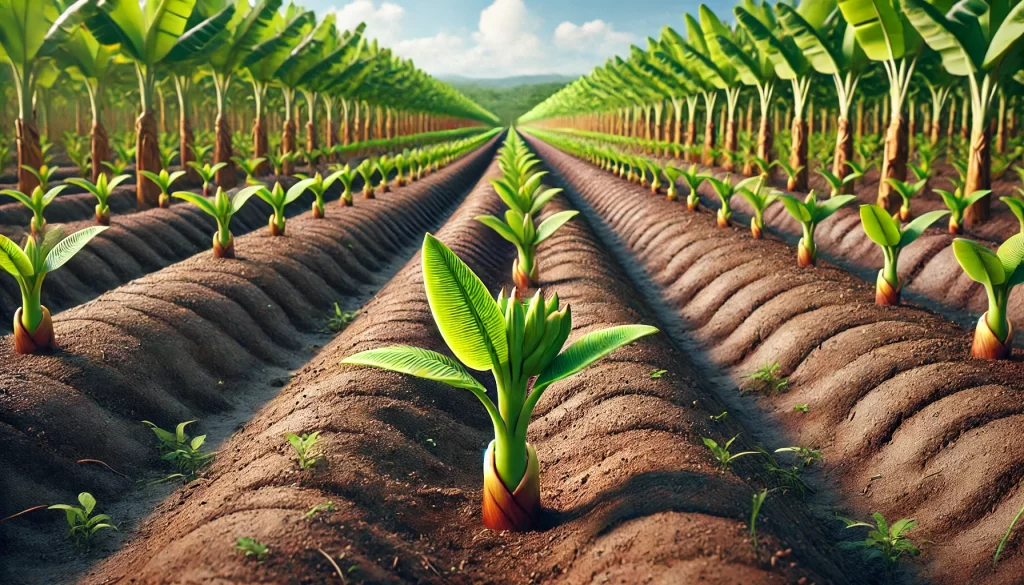
Propagation Methods
Bananas are propagated through suckers or corms. Suckers are shoots that emerge from the mother plant and are used to establish new plantations.
Crop Establishment
- Spacing: A spacing of 2.5 to 3 meters between plants and 3 to 4 meters between rows is recommended, depending on the variety and soil conditions.
- Planting: Suckers should be planted in holes prepared with organic amendments, ensuring that the corm is well covered with soil to promote good rooting.
Irrigation and Water Management
Water Requirements for Bananas
Irrigation is essential for banana development, especially during vegetative growth and fruit development stages. Water requirements vary according to the growth stage:
- Establishment: Frequent irrigation to ensure good rooting of the suckers.
- Vegetative Growth: Maintain constant irrigation to promote leaf and pseudostem development.
- Fruit Development and Maturation: Abundant and regular irrigation to ensure fruit filling and quality.
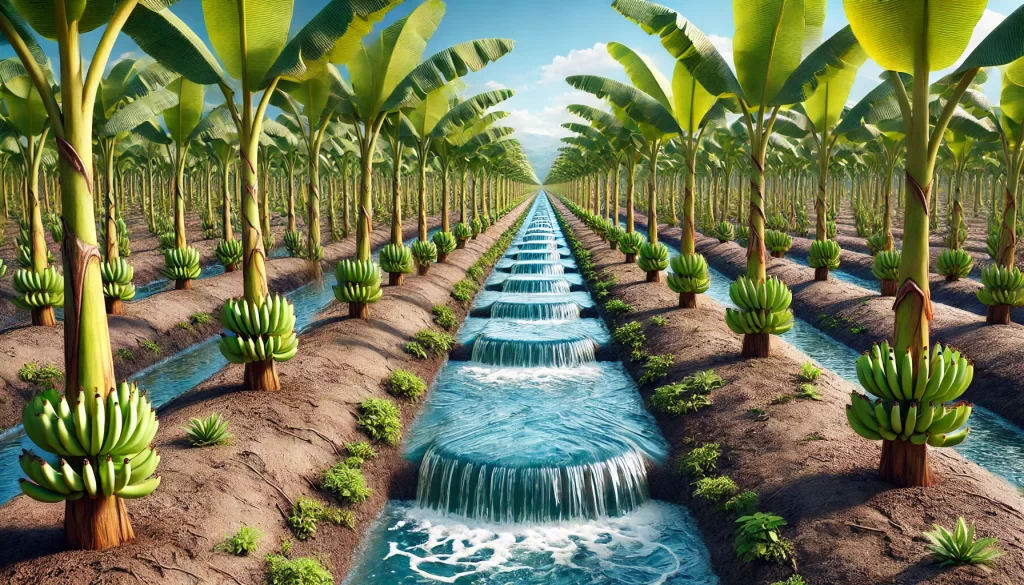
Irrigation Systems
- Drip Irrigation: Provides water directly to the roots, reducing evaporation losses and ensuring efficient water use.
- Sprinkler Irrigation: Suitable for areas with water limitations, but must be carefully managed to avoid foliar diseases.
Banana Fertilization
Nutritional Requirements
Bananas are demanding in nutrients, especially nitrogen, phosphorus, and potassium. A balanced fertilization plan is essential for achieving high yields and quality fruits.
- Nitrogen (N): Crucial for vegetative growth and leaf formation.
- Phosphorus (P): Important for root development and bunch formation.
- Potassium (K): Improves fruit quality, disease resistance, and storage capacity.
Fertilization Plan
- Base Fertilization: Apply a mixture of NPK before planting to prepare the soil.
- Top-Dressing Fertilization: Perform periodic applications during the crop cycle, adjusting doses based on soil analysis and plant condition.
- Foliar Fertilization: Complement with foliar applications of micronutrients to correct specific deficiencies and promote healthy growth.
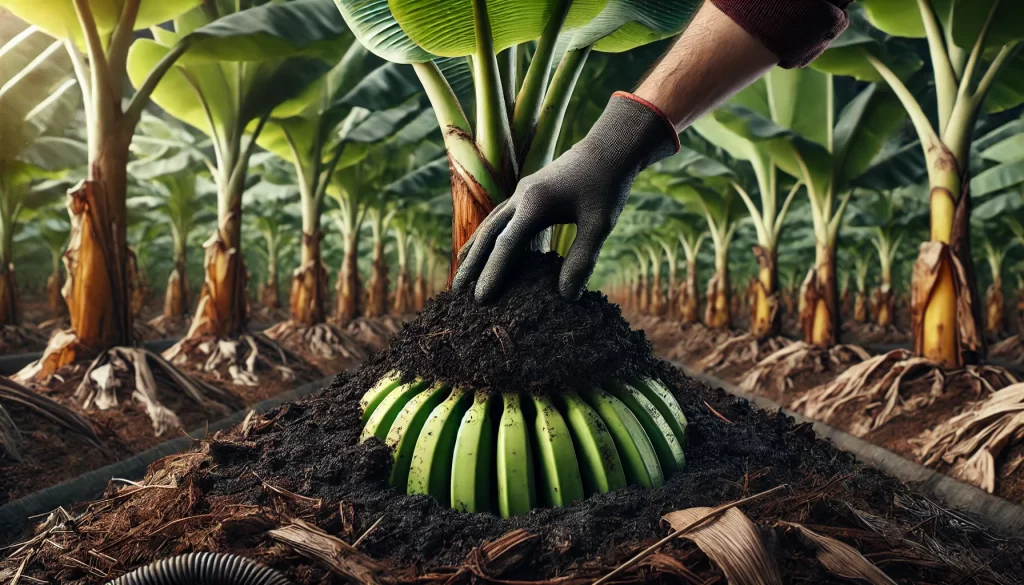
Pest and Disease Management
Common Pests
Pest control is crucial to maintaining the health of banana plants and ensuring the production of high-quality fruits. The most common pests include:
- Banana Weevil (Cosmopolites sordidus): Insect that feeds on the pseudostem and roots, weakening the plants.
- Mites: Cause discoloration and deformation of the leaves, reducing photosynthesis and plant vigor.
Control Strategies
- Regular Monitoring: Regularly inspect plants to detect pests early.
- Biological Control: Introduce natural predators such as ants and entomopathogenic nematodes to control pests.
- Insecticide Use: Apply specific products following technical recommendations to minimize environmental impact and prevent resistance.
Common Diseases
Diseases can significantly affect the productivity of banana cultivation. The most common include:
- Black Sigatoka (Mycosphaerella fijiensis): Fungus that affects the leaves, reducing photosynthesis and crop yield.
- Panama Disease (Fusarium oxysporum f. sp. cubense): Soil-borne disease that causes wilting and death of plants.
Control Strategies
- Sanitary Management: Remove affected leaves and plants to reduce disease spread.
- Fungicide Use: Apply preventive fungicides under conditions favorable to disease development.
- Crop Rotation: Avoid planting bananas in the same area for several consecutive years to reduce soil-borne disease pressure.
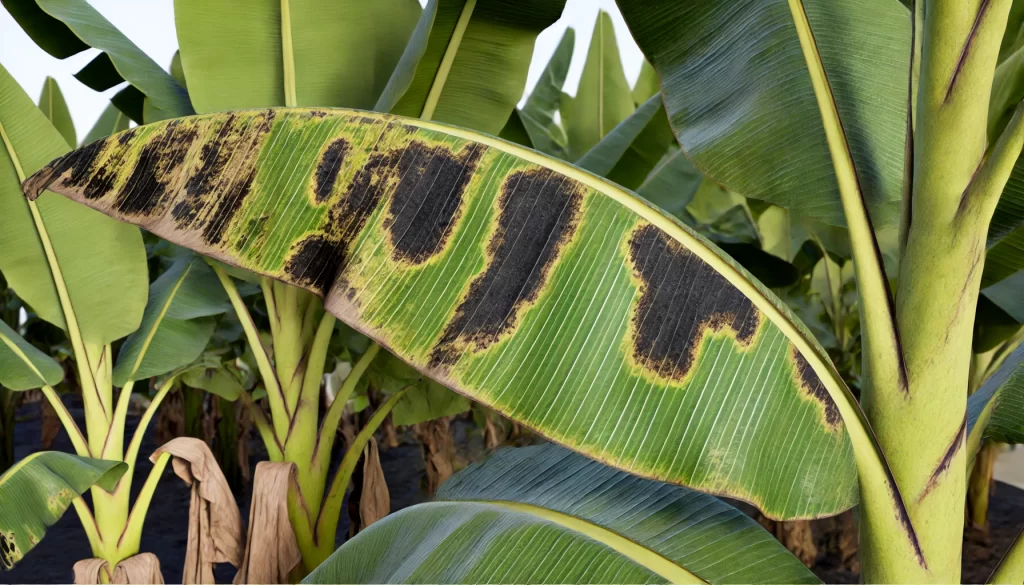
Harvest and Post-Harvest Management
Maturity Indicators
Bananas should be harvested when the fruits have reached physiological maturity, which is determined by:
- Fruit Color: The fruits acquire a bright green color, and the peel begins to change to a lighter shade.
- Fruit Size: The fruits reach the characteristic size and weight of the variety.
Harvesting Techniques
Bananas are harvested manually by cutting the entire bunch with a machete. It is important to handle the fruits carefully to avoid damage that could affect their shelf life.
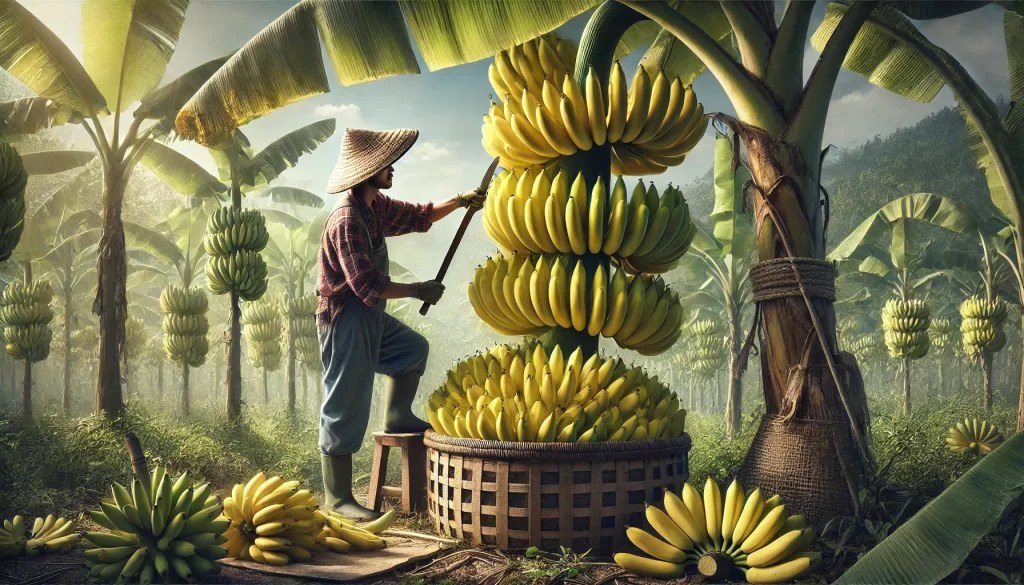
Post-Harvest Management
Post-harvest management is crucial to maintaining the quality of bananas until they reach the market. Recommended practices include:
- Washing and Grading: Remove impurities and grade the fruits according to size, color, and quality.
- Degreening: If necessary, apply ethylene treatment to accelerate the ripening process in controlled chambers.
- Storage: Store the fruits in refrigerated chambers at a temperature of 13-15°C to maintain their freshness and quality.
 AgronoBlog – Agriculture Blog
AgronoBlog – Agriculture Blog 